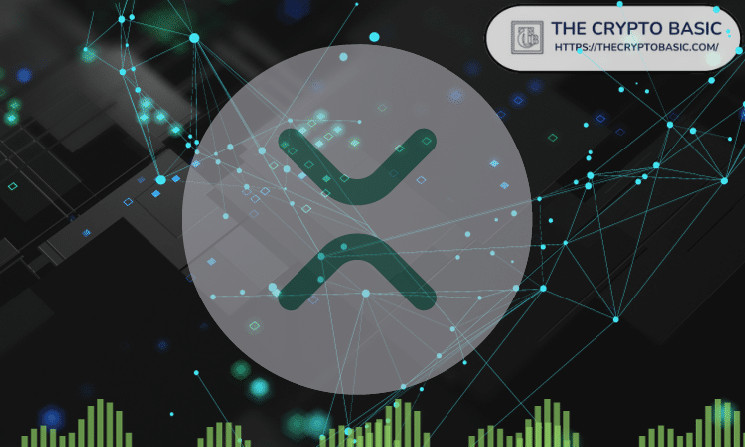A trader recently swapped $80 for 1,869 XRP, essentially buying 1 XRP for a discount price of $0.0428 after a price impact from a single-sided deposit on an XRPL AMM.
The Automated Market Maker (AMM) functionality for the XRP Ledger (XRPL) has finally gone live, but inexperience appears to be negatively affecting the use of the AMM pools on the network shortly after the ecosystem welcomed the feature.
Single-Sided Deposits Impacting XRPL AMM
This problem stems from the mass influx of single-sided deposits on AMM instances with XRP, as proponents flood the pools with XRP tokens. Notably, all AMM pools host two assets, which ought to be evenly balanced with deposits from liquidity providers.
For instance, if a market participant wishes to deposit into the XRP/USDC pool, he would need to deposit equal amounts of XRP and USDC to keep the pool balanced. Depositing only XRP or only USDC is single-sided and could impact the price of the assets in the pool.
The Crypto Basic reported last week that these single-sided deposits had prevailed in the XRP/USDC pools. Liquidity providers continued to deposit XRP without an inflow of USDC, leading to more XRP and less USDC. This practice pushed the price of XRP down to $0.34 in the pool, leaving an arbitrage opportunity.
However, traders could not leverage this arbitrage opportunity, as USDC was hard to come by for the trade. Nonetheless, in the recent development, one market participant was able to catch the opportunity following a single-sided deposit that impacted XRP’s price.
Trader Buys 1 XRP for $0.0428
Neil Hartner, a Senior Staff Software Engineer at Ripple, pointed out that on March 22, a liquidity provider deposited 2,000 XRP into the XRP/USD pool, affecting the rate of XRP to USD. This caused the price of XRP to drop drastically in the pool.
⚠️ WARNING: Be very cautious with single-sided deposits into AMM pools that don’t have a lot of assets yet. This 2000 XRP deposit caused the rate on the pool to get heavily skewed, allowing someone to arbitrage the pool by swapping 80 USD for 1869 XRP. pic.twitter.com/bqQP3qtI4a
— Neil Hartner (@illneil) March 22, 2024
An arbitrageur saw the opportunity and immediately swapped $80 for 1,869 XRP using a DEX order. With this trade, the market participant purchased 1 XRP for $0.0428. If he chooses to sell the 1,869 XRP at XRP’s market value of $0.6345, he will get $1,185. This results in a profit of $1,105.
While this sounds like a good trade for the arbitrageur, the liquidity providers on this pool would have to suffer the loss, as the XRPL AMM has to balance itself after losing 1,869 XRP to get $80. A trader impacted by this event confirmed that his 500 XRP now amounts to 427 XRP.
Speaking on single-sided deposits, Ripple CTO David Schwartz emphasized the benefits and potential drawbacks of the single-sided deposit feature. He noted that while such deposits enhance the user experience by simplifying the process, they may also influence price dynamics, especially in pools with lower liquidity.
To clarify, the recently identified issue is not caused by the single-sided deposit feature, which is an intended functionality of the AMM design. Single-sided deposits allow for a more streamlined user experience, but can lead to price impacts when pools have less liquidity.… https://t.co/bnp5v8avnK
— David “JoelKatz” Schwartz (@JoelKatz) March 24, 2024
Schwartz advised users to examine the potential price impact using their available tools before executing a transaction. Additionally, he recommended that applications interfacing with users should incorporate and present this information to inform user decisions.

